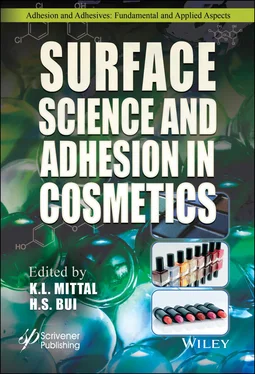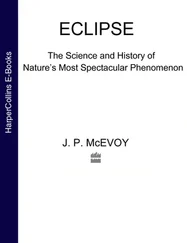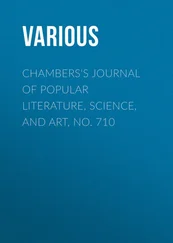64. T. Jacks and B. Mattox, Solvent-based non-drying lipstick, US Patent 5690918A, assigned to Maybelline Inc. (1997).
65. D.W. Rafferty, L. Dupin, J. Zellia, and A. Giovannitti-Jensen, Predicting lipstick sensory properties with laboratory tests, Int. J. Cosmet. Sci. , 40, 451–460 (2018).
66. N. M. P. Videos, “Man. Lip. Vertical section. 100X.” [Online]. Available: https://www.nature-microscope-photo-video.com/en/photos/animal-histology/comparative-histology-of-vertebrates/integumentary-system/mammals/lip/010505c01050505d-man-lip-vertical-section-100x.html.
* Corresponding author : ichien.Liao@rd.loreal.com
2
Effect of Cosmetic Oils on Lipstick Structure and Its Deposit
Momoko Suzumeji Shimizu1*, Yuta Nomura1 and Hy Si Bui2
1L’Oréal Research and Innovation, Kawasaki, Kanagawa, Japan
2L’Oréal Research and Innovation, Clark, NJ, USA
Abstract
This chapter will review the properties of some common natural waxes, their crystallization behaviors in oil-wax systems and their potential applications for long-lasting properties in cosmetics. Specifically, the impact of oil polarity and viscosity on the lipstick structure and the effect of the wax amount on the deposit will be discussed. Due to the complex and inhomogeneous chemical composition of natural waxes, for a systematic study polyethylene wax was used in an oil-wax system as a simple model to investigate the effect of oil viscosity and oil polarity on the lipstick structure. The results showed that the hardness of the lipstick was affected by both the oil polarity and oil viscosity at a fixed amount of wax. With increasing the oil polarity and viscosity, the oil-wax stick was harder with smaller or close-packed crystals as observed by SEM. These results were found to be very similar to the natural wax-oil gel systems reported in literature. In addition, with increasing oil viscosity, the sensorial perception changed from smooth to watery to sticky, and it did not depend on the oil polarity.
Keywords: Lipsticks, oil, wax, shine, deposit, texture, oil-wax gel, crystallization
Waxes are highly crystalline materials exhibiting a large melting enthalpy. Due to their high crystallinity, they are used as gelling agents or structural agents in many applications such as pharmaceuticals, foods, candles, coatings, inks and cosmetics. In cosmetic application, waxes are commonly used either in lipsticks to control the hardness of the lipstick structure or in a mascara to enhance the volume on eyelashes. In the lipstick formulations, wax is combined with oils to form an oil-wax gel system. The ability of a wax/oil system to form a crystalline network with specific characteristics such as texture and deposit depends on the concentration of the wax in the oils and on the type of wax. Hard wax with high melting temperature is used to control the hardness of solid lipstick, whereas soft wax with low melting temperature is used for texture. The common hard and soft waxes used in lipstick formulations are ozokerite, carnauba, candelilla, beeswax, polyethylene, paraffin wax and microcrystalline wax ( Table 2.1).
For lipstick application, it is important to control the quality of the lipstick such as stability under hot or cold condition. On application, a good lipstick must be soft enough to slide on the lips and deposit a uniform layer of lipstick, but should be hard enough not to break under application. To balance the rigid structure of the lipstick and its deposit, the combination of both hard and soft waxes is necessary in the formulation. If the lipstick is too hard, the application will be draggy and less product will deposit on lips. If the lipstick is soft, the structure is not strong enough to be supported by the container and is easy to break during application. The soft lipstick is used to give creamy texture, thick deposit and shine from oils. Therefore, controlling the hardness and amount of deposit from oil-wax lipsticks is very important and challenging in lipstick formulation.
Table 2.1 Some common waxes used in lipstick formulations.
| Wax |
Melting Temperature Tm (°C) |
| Polyethylene |
80-105 |
| Microcrystalline |
85-95 |
| Carnauba |
80-90 |
| Rice Bran |
70-80 |
| Ozokerite |
70-90 |
| Paraffin wax |
50-60 |
| Candelilla |
65-75 |
| Synthetic beeswax |
62-65 |
Due to increasing demands from consumers for natural products and environmental concerns, the common waxes from synthetic and petroleum sources used in the lipstick formulations such as polyethylene, microcrystalline and ozokerite waxes can be replaced by natural waxes [1–6]. Some commercial lipsticks claimed as natural lipsticks contain beeswax, candelilla and carnauba waxes as structure agents and natural plant oils. Candelilla and carnauba waxes are hard waxes with high melting points, therefore, they are commonly used together with low melting point beeswax to create the rigid structure for natural lipstick products. The common oils used in the natural lipstick formulations are olive oil, mineral oil, cocoa butter, jojoba oil, lanolin and petrolatum. The compositions of natural lipsticks or natural lip balms contain the ingredients shown in Table 2.2.
However, there is still lack of scientific understanding of natural waxes crystallized in various oils and in many natural ingredients which makes the natural lipstick formulations challenging in terms of structural stability, product spreadability and sensorial perception. Therefore, an understanding of the interactions of natural waxes with cosmetic oils or natural oils and with other ingredients in lipstick formulations is very important and necessary to achieve the best lipstick structure. This chapter will review the properties of some common natural waxes, the effect of oils on the oil-wax structures, and their potential applications in long-lasting cosmetics. Due to the complexity and inhomogeneity of chemical compositions of natural waxes, we used polyethylene wax in a simple oil-wax system as a model to investigate systematically the effect of oil viscosity and oil polarity on the lipstick structure.
Table 2.2 Typical composition of natural lipstick or lip balm [1–6].
| Ingredients |
Examples |
| Natural waxes |
Beeswax, carnauba wax, candelilla wax |
| Plant Oils |
Castor oil, chamomile oil, jojoba oil, olive, coconut and sunflower oil |
| Plant-based emolients |
Shea butter, cocoa butter, avocado, and aloe vera |
| Natural colors from fruits |
Purple carrot, berries, pomegranate |
| Mineral colorants |
Titanium dioxide, iron oxide, mica |
| Natural fragrances |
Vanilla extract |
| Natural preservatives |
Vitamin E from soy, honey |
2.2 Types of Natural Waxes, Their Physical Properties and Potential Applications
Natural waxes originate either from animals or from plants. The chemical composition of wax contains a mixture of long-chain hydrocarbons, alcohols, free acids, and wax esters. The ester component is derived from long-chain fatty alcohol and fatty acid. Blake and coworkers reported the chemical composition of some common natural waxes in detail [7, 8]. It is observed that ester components are high (> 90%) for sunflower wax (SFW) and rice bran wax (RBW) but are lowest in candelilla wax (CLW) (<35%).
Читать дальше












